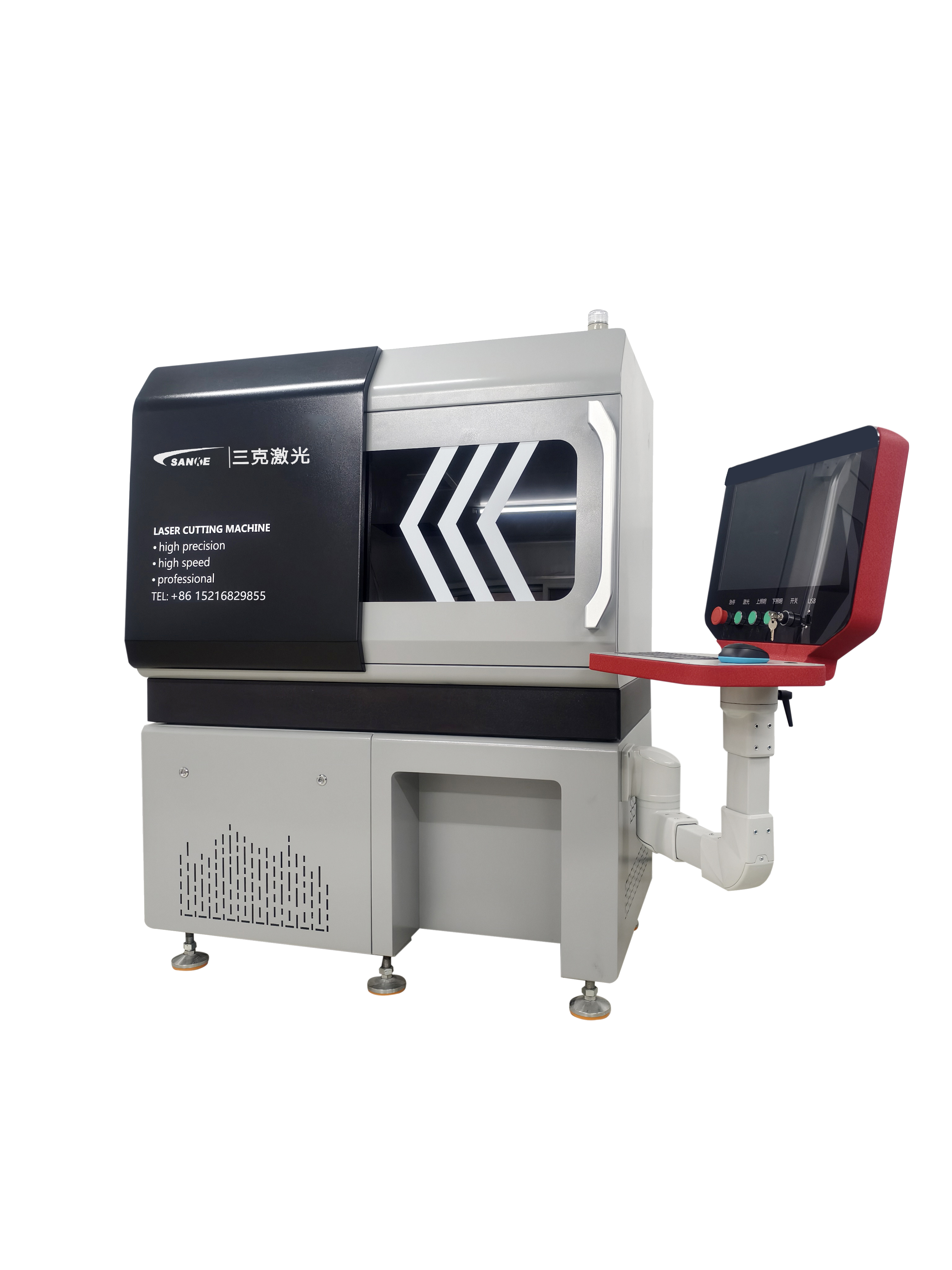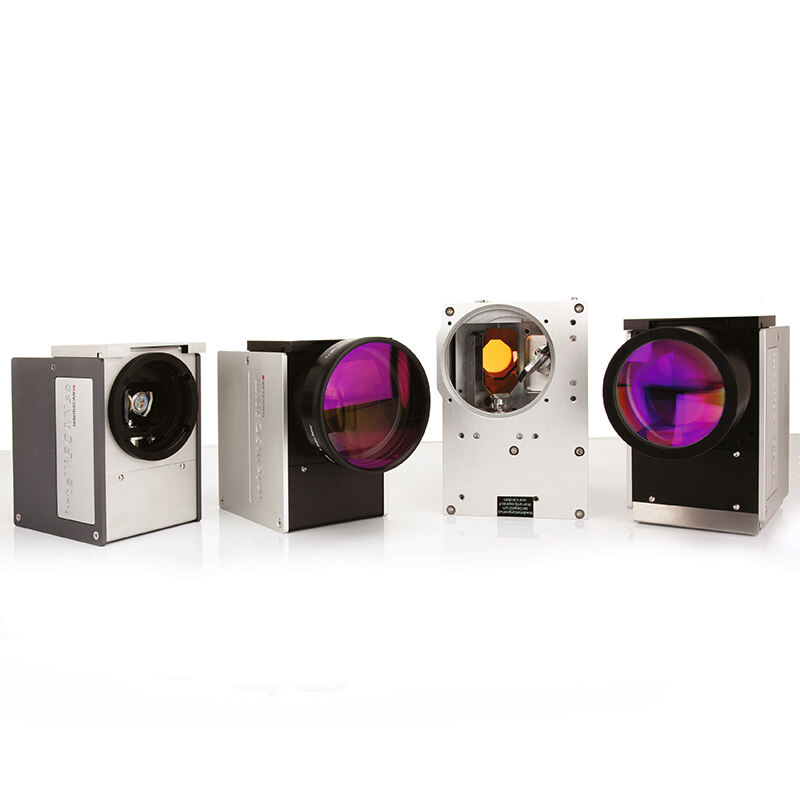Laser drilling machines have revolutionized precision manufacturing across industries, offering unparalleled accuracy and efficiency for creating micro-holes in various materials. However, the powerful laser beams used in these systems pose significant safety risks to operators if proper precautions are not implemented. Ensuring operator safety requires a comprehensive approach that combines proper training, safety equipment, facility design, and strict adherence to established protocols. Understanding these critical safety measures is essential for maintaining a secure working environment while maximizing the benefits of laser drilling technology.

Personal Protective Equipment and Safety Gear
Laser Safety Eyewear Requirements
The most critical safety equipment for laser drilling machine operators is appropriate laser safety eyewear. Different laser wavelengths require specific optical density filters to protect against retinal damage and corneal burns. Operators must wear safety glasses or goggles that match the wavelength specifications of their particular laser system. These protective eyewear pieces must be certified to meet international safety standards such as ANSI Z136.1 or EN 207. Regular inspection and replacement of laser safety eyewear ensures continued protection, as damaged or scratched lenses can compromise their effectiveness.
Training programs should emphasize the proper selection, use, and maintenance of laser safety eyewear. Operators need to understand that different laser types, including CO2, Nd:YAG, and fiber lasers, emit different wavelengths requiring specific protective filters. Backup pairs of safety eyewear should always be available in case of damage or malfunction. Additionally, visitor safety glasses must be provided for anyone entering the laser work area, ensuring comprehensive protection for all personnel.
Protective Clothing and Skin Protection
Beyond eye protection, operators working with laser drilling machines require appropriate protective clothing to prevent skin exposure to laser radiation. Dark-colored, tightly woven fabrics provide better protection against reflected laser beams than light-colored or loose-weave materials. Long-sleeved shirts, full-length pants, and closed-toe shoes create a barrier against accidental laser exposure. Synthetic materials that may melt when exposed to laser energy should be avoided in favor of natural fibers like cotton or wool.
Gloves designed for laser work environments offer protection for hands and fingers, which are often in close proximity to the work area. However, operators must balance protection with dexterity requirements for precise positioning and adjustment tasks. Some facilities implement specialized laser-resistant aprons or lab coats for additional torso protection. The selection of protective clothing should consider both the laser specifications and the specific tasks being performed during laser drilling operations.
Facility Design and Environmental Controls
Laser Controlled Areas and Access Control
Establishing properly designed laser controlled areas is fundamental to operator safety when using laser drilling machines. These designated zones must be clearly marked with appropriate warning signs indicating laser hazard levels, wavelengths, and required safety measures. Access control systems, including key cards, locks, or interlock mechanisms, prevent unauthorized personnel from entering active laser areas. The boundaries of laser controlled areas should be determined through hazard analysis calculations that consider maximum beam paths and potential reflection angles.
Interlocked safety systems automatically shut down laser drilling machine operations when doors are opened or safety barriers are breached. These systems provide an essential fail-safe mechanism that protects both operators and visitors from accidental exposure. Emergency stop buttons must be easily accessible and clearly marked throughout the laser work area. Regular testing and maintenance of interlock systems ensures their reliability when protection is needed most.
Ventilation and Fume Extraction Systems
Laser drilling processes often generate hazardous fumes, particulates, and vapors that pose respiratory and health risks to operators. Proper ventilation systems must be designed to capture and remove these contaminants at their source before they can disperse into the work environment. Local exhaust ventilation positioned near the laser drilling point provides the most effective removal of process-generated pollutants. The ventilation system capacity should be calculated based on the specific materials being processed and the laser power levels used.
Filter systems integrated with exhaust ventilation remove harmful particles and chemical vapors before air is recirculated or exhausted outside the facility. High-efficiency particulate air filters and activated carbon filters address different types of contaminants generated during laser drilling operations. Regular filter replacement and system maintenance ensures continued effectiveness of fume extraction systems. Monitoring systems can provide real-time feedback on air quality and filter condition, alerting operators when maintenance is required.
Training and Operational Procedures
Comprehensive Operator Training Programs
Effective operator training forms the foundation of laser drilling machine safety programs. Training curricula must cover laser physics fundamentals, specific hazards associated with different laser types, proper use of safety equipment, and emergency procedures. Hands-on training under supervision allows operators to develop safe work practices while learning proper machine operation techniques. Initial training should be followed by periodic refresher courses to reinforce safety concepts and address any changes in equipment or procedures.
Certification programs ensure that operators demonstrate competency in both technical skills and safety practices before working independently with laser drilling machines. Training records must be maintained to document completion of required safety training and ongoing professional development. Specialized training modules should address specific hazards related to different materials, laser parameters, and operational modes. Role-specific training ensures that supervisors, maintenance personnel, and operators each receive appropriate instruction for their responsibilities.
Standard Operating Procedures and Safety Protocols
Written standard operating procedures provide detailed guidance for safe laser drilling machine operation under various conditions. These procedures should cover startup and shutdown sequences, parameter adjustment protocols, material handling requirements, and emergency response actions. Step-by-step checklists help operators follow consistent safety practices and reduce the likelihood of errors or omissions. Procedures must be regularly reviewed and updated to reflect changes in equipment, materials, or safety requirements.
Safety protocols should establish clear guidelines for visitor access, maintenance activities, and unusual operating conditions. Lockout-tagout procedures ensure safe maintenance and service activities by preventing accidental laser activation during equipment servicing. Documentation requirements help maintain accountability and provide records for safety audits and incident investigations. Regular drills and practice sessions help operators maintain proficiency with emergency procedures and safety protocols.
Equipment Maintenance and Safety Inspections
Preventive Maintenance Programs
Regular maintenance of laser drilling machines is essential for both operational performance and safety. Preventive maintenance schedules should address all safety-critical components, including laser generators, beam delivery systems, safety interlocks, and emergency stops. Qualified technicians must perform maintenance activities following manufacturer specifications and safety guidelines. Maintenance records provide documentation of equipment condition and help identify potential safety issues before they become hazardous.
Calibration and alignment procedures ensure that laser beams remain properly contained and directed during operation. Misaligned optical components can create unexpected beam paths that pose safety risks to operators. Power output verification confirms that laser systems operate within specified parameters and safety limits. Component replacement schedules for items like protective windows, filters, and safety devices help maintain system integrity over time.
Safety System Testing and Validation
Regular testing of safety systems validates their continued effectiveness in protecting operators from laser hazards. Interlock systems must be tested to ensure proper activation when safety barriers are breached or doors are opened. Emergency stop functions should be verified to confirm immediate laser shutdown when activated. Beam containment systems, including enclosures and barriers, require periodic inspection to detect damage or degradation that could compromise protection.
Documentation of safety system testing provides evidence of compliance with safety standards and regulatory requirements. Test procedures should be standardized to ensure consistent and thorough evaluation of all safety functions. Any failures or deficiencies identified during testing must be corrected before resuming laser operations. Independent verification of safety system performance by qualified safety professionals adds an additional layer of assurance.
Emergency Procedures and Incident Response
Emergency Response Planning
Comprehensive emergency response plans address various scenarios that may occur during laser drilling operations, including accidental exposure, equipment malfunctions, fires, and medical emergencies. Response procedures must be clearly defined, easily accessible, and regularly practiced by all personnel. Emergency contact information for medical facilities, fire departments, and laser safety officers should be prominently displayed near laser work areas. Communication systems ensure rapid notification of emergency services and management personnel when incidents occur.
First aid procedures specific to laser-related injuries provide guidance for immediate response while awaiting professional medical care. Eye irrigation stations and burn treatment supplies should be readily available in laser work areas. Emergency shutdown procedures enable rapid deactivation of laser systems during crisis situations. Evacuation plans ensure safe egress from laser areas during emergencies while accounting for potential visual impairment from laser exposure.
Incident Investigation and Reporting
Thorough investigation of laser-related incidents helps identify root causes and prevent future occurrences. Investigation procedures should preserve evidence, interview witnesses, and analyze contributing factors including equipment condition, procedures, training, and environmental conditions. Incident reports must be completed promptly and distributed to appropriate personnel including safety officers, management, and regulatory authorities as required. Near-miss reporting encourages proactive identification of potential hazards before they result in injuries or exposures.
Corrective action plans developed from incident investigations address identified deficiencies in equipment, procedures, or training. Follow-up activities verify implementation of corrective measures and assess their effectiveness in preventing similar incidents. Trend analysis of incident data helps identify patterns and systemic issues that require organizational attention. Communication of lessons learned throughout the organization promotes continuous improvement in laser safety practices.
FAQ
What type of eye protection is required for laser drilling machine operators?
Operators must wear laser safety eyewear specifically designed for their laser's wavelength and power level. The eyewear must meet ANSI Z136.1 or EN 207 standards and provide appropriate optical density for the specific laser type being used. Different lasers such as CO2, Nd:YAG, or fiber lasers require different protective filters, so proper selection is critical for effective protection.
How often should safety systems be tested on laser drilling machines?
Safety systems including interlocks, emergency stops, and beam containment should be tested regularly according to manufacturer recommendations, typically monthly or quarterly depending on usage intensity. All safety functions must be verified before beginning work each day, and comprehensive system testing should be documented to maintain compliance with safety standards and provide evidence of proper maintenance.
What ventilation requirements are needed for laser drilling operations?
Laser drilling operations require local exhaust ventilation positioned near the work point to capture fumes and particulates at their source. The ventilation system must be sized appropriately for the materials being processed and laser power levels used. HEPA filters and activated carbon filters should be included to remove harmful particles and chemical vapors before air recirculation or external exhaust.
Who should have access to laser drilling machine work areas?
Access should be limited to trained and authorized personnel only. All individuals entering laser controlled areas must wear appropriate safety equipment and understand the hazards present. Visitors require supervision by qualified operators and must use provided safety eyewear. Access control systems such as key cards or locks help prevent unauthorized entry into active laser work zones.
 EN
EN
 AR
AR
 FR
FR
 DE
DE
 JA
JA
 KO
KO
 RU
RU
 ES
ES


